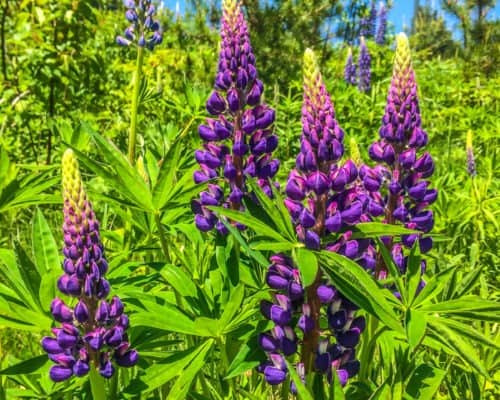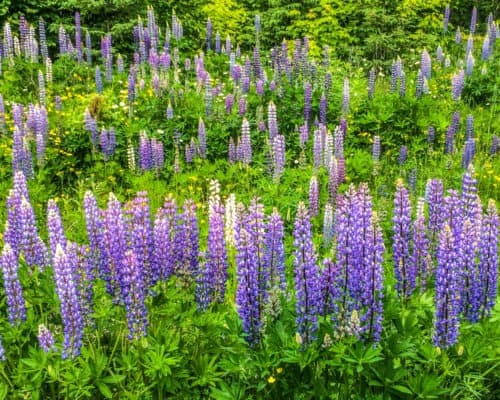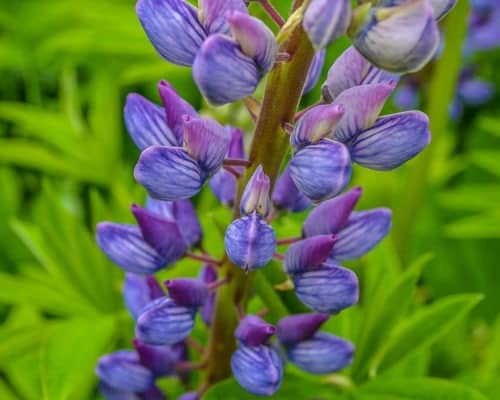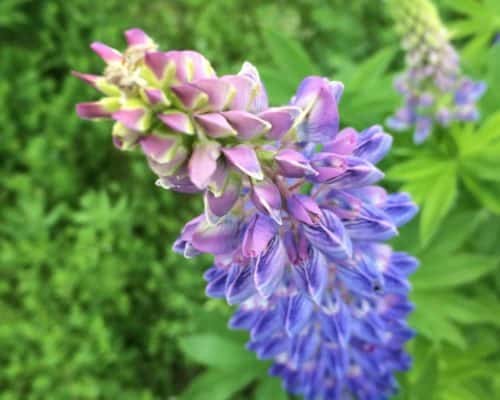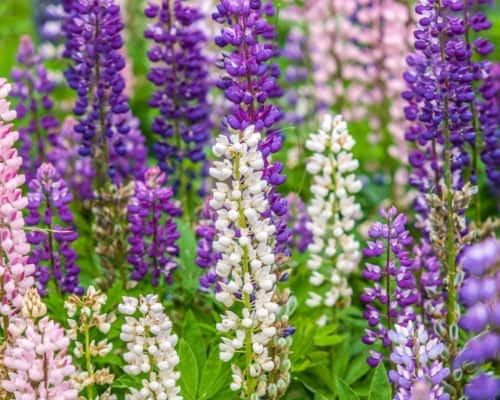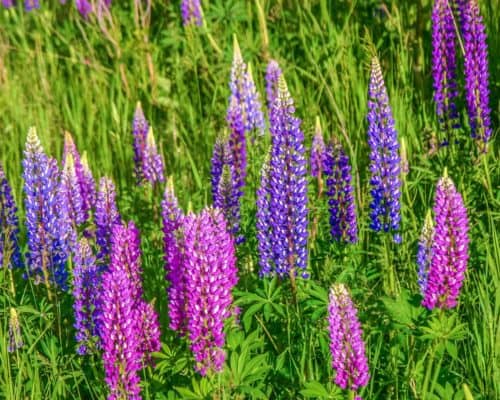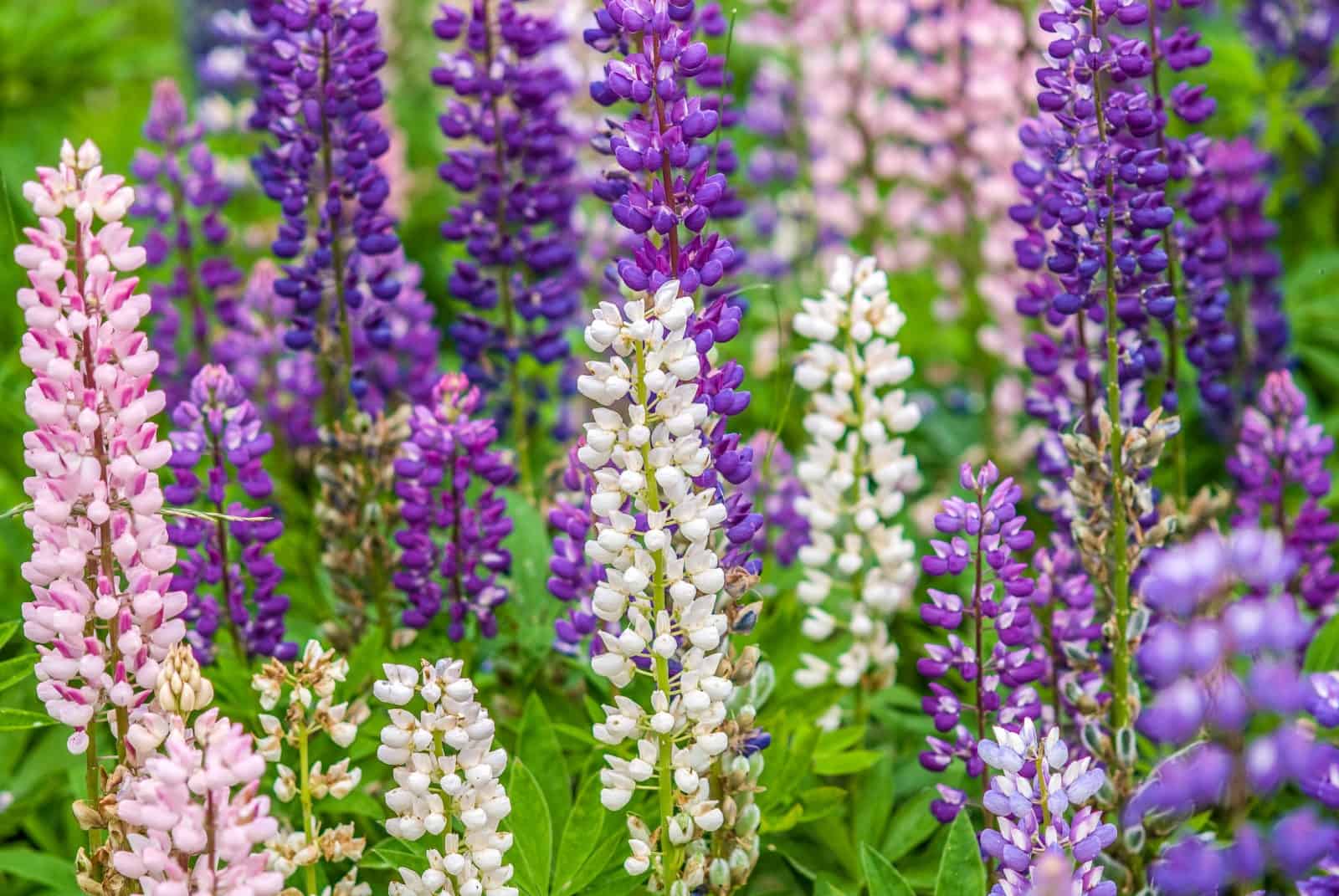Lupine
The pinks, purples, and whites of the lupine flowers explode color all over the North Shore in the late spring and early summer months. However, while beautiful, these flowers are an invasive species that, frankly, doesn’t belong here.
Lupine Provide A Beautiful Array of Color
Lupine, part of the legume family (it’s related to peas!), is a distinct flower that displays beautiful colors during its blooming season. The bloom of the flowers draws spectators from all over the country. It is a cool weather plant that thrives best in the late spring/early summer months. The flower dies down from the heat of the summer. Some years, they may not even put up a stem if the temperatures are too warm. The reason it thrives on the North Shore so well is due to the fact that our spring temperatures stay rather mild.
The plant prefers well-drained, sandy soils that are fully exposed to the sun. This makes the areas alongside Highway 61 ideal for them to thrive.
Science of the Lupine Flower
Lupine are unique flowers in that different color variations grow alongside each other. In most flowers, color is determined by sun exposure, soil, and other natural factors. This is why you can find different color variations of some flowers, they just don’t grow in the same place as often. Lupine is unique in that the color isn’t determined by the elements- it’s determined by the species and variations of the species. Different species can live together, side by side, and thrive.
Color variation in Lupine was studied as far back as the early 1900s when scientists began figuring out why the colors vary so much. While the exact number of species is unclear, most agree there are over 250 different species and variations of lupine! It’s hard to determine the exact number as scientists have been breeding different seeds together to create new ones. They include both annuals and perennials, as well.
On the North Shore, you will mostly see shades of pink, purple, and white. However, lupin also can be seen in varying shades of blue, yellow, and red.
Anatomy of Lupine
The upper and lower parts of the flower have dark veins that are forcibly opened by insects to reach their horn-shaped stamen. They typically stand around 8-18” tall and have pea-like flowers. Depending on the weather, you can see lupin bloom in June and July. Although, some years they’ve bloomed as early as May.
Usually growing in bunches, these flowers will be easy to notice with their vibrant colors sticking out from the green brush typically surrounding them.
An Invasive Species
While beautiful, only Wild Lupine (Lupinus perennis) is native to the North Shore. This species isn’t as common as the Large-Leaved Lupin (Lupinus polyphyllus). These flowers are not native to the North Shore. However, the area has ideal conditions for this species to thrive in. Over the past 20 years, their presence has spread so significantly that you can see them virtually everywhere along the shore. So when we talk about these flowers, we are mostly referring to the Large-Leaved species, not the native Wild species.
Unfortunately, the Large-Leaved species has started taking up growing space for native wildflowers, including Wild Lupine, causing them to no longer grow and thrive in areas where Large-Leaved Lupine are abundant. Therefore, they are considered an invasive species.
At this time, they are considered only a moderate threat. But, one problem with letting lupine thrive is that the flower and the seeds are toxic to much of the wildlife on the North Shore. Meanwhile, they are pushing out edible wildflowers that wildlife depends on for food in the spring and summer. This makes finding food more difficult for wildlife, whose population may start to suffer. Potentially, these beautiful flowers could affect the population of some beloved North Shore animals, like the moose.
Lupine flowers were able to grow and thrive in northern Minnesota due to being planted in flower gardens. The hardy flowers were then spread by bees and animals as they moved about, spreading the seeds. The Minnesota DNR strongly discourages contributing to the spread of all invasive species, no matter how beautiful. Please do not pick or plant lupine.
When and Where to See Them
Yes, lupine is an invasive species and we should all do our parts to not contribute to their spread. On the other hand, they are truly a beautiful flower that really shines in the green, lush landscape on the North Shore. Many visitors do make the trek up to see them each spring.
The peak of Lupine season typically happens from mid-June to early-July, although it largely depends on the weather. Some years, we can see them bloom as early as late-May and even into late-July. The first heatwave of the summer season will usually ends their season.
While you can find lupine throughout the North Shore, they are most easily spotted along Highway 61. Just take a drive anywhere between Duluth and the Canadian border in mid-June and you simply cannot miss them.
Just please, do your part to keep them from spreading even more, and contributing to the loss of our native wildflowers, which are also beautiful!
